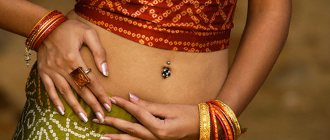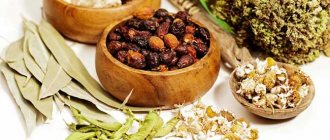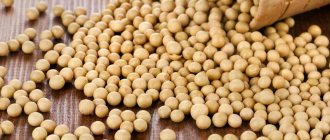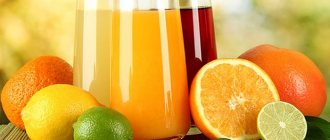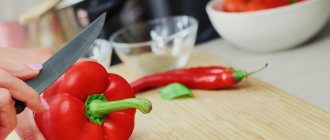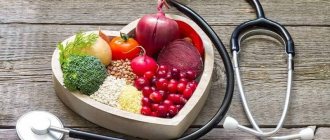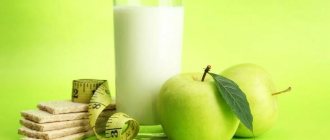Description of bioenergy Vata dosha
Vata dosha is one of the three components of the doshas. The most mobile dosha represents the energy of the wind, and in the body it is responsible for movement; it corresponds to cold, dryness, activity, and lightness. The presence of this energy in a person is indicated by his appearance - thinness, tall stature, or vice versa small . A characteristic feature in humans is cool extremities. Patronizes the organs responsible for movement - heart, lungs, joints, bones. Vata dosha is dry, cold energy, therefore this energy complex will be adversely affected by drought, dry food, cold weather, because it significantly affects the strengthening of this dosha, unbalances it, and therefore causes an adverse effect. Vata dosha is a heat-loving energy.
Physiological symptoms of imbalance : general lethargy, feeling overwhelmed, fear, anxiety, anger, insomnia, headaches, aversion to touch, cold extremities, aching pain in the joints, tinnitus, cracks in the skin, gases, ways to regulate balance - rest , calmness, keeping warm, regular meals with a predominance of sweet, salty and sour tastes, heat-treated vegetables, herbal tea, non-astringent fruits and berries, fermented milk products (excluding cottage cheese, yogurt and kefir), spices: ginger, turmeric , asafoetida, coriander leaves, cumin, mint, rosemary.
The dangerous time of year for this type of energy is autumn and winter.
Basic concepts of Ayurveda: 5 main elements and 3 doshas
The principle of 3 doshas is one of the main ones in Ayurveda. Doshas are 3 vital energies that regulate the work of 3 fundamental concepts of human unity: the spiritual principle, the intellectual essence and the bodily shell. They control all physiological processes in the human body and influence the psycho-emotional and intellectual state of an individual. These 3 doshas are called: - pitta dosha; - vata dosha; - kapha dosha. Each dosha in one way or another determines the state and functioning of various organs and systems of the human body. It affects the intensity of energy conversion, synthesis and excretion of substances from the body. Doshas generally determine not only a person’s physical state, but also his mental development. Depending on which of the doshas prevails, it determines the possible mental and physical characteristics of this person. Health is the harmony of the doshas But it is important to understand that every person has all 3 doshas. The principle of life itself is based on this trinity. If the doshas fill the spirit and body in equal proportions, i.e. each occupy 33.3%, then this ratio is considered ideal harmony. It provides a person with excellent health, longevity and excellent well-being at any age. Alas, such a harmonious combination is very rare. Most people constantly balance on a fine line between illness and health: as soon as one of the doshas - vata, pitta or kapha - begins to predominate, a person inevitably begins to get sick. In order to heal and regain your original health, you need to strive to restore the ideal balance of these energies. All treatment in Ayurveda is aimed at this restoration, which is also called dosha correction.
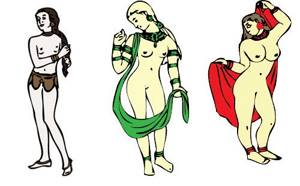
The principle of creation and harmonization Like everything in Ayurveda, the correction of doshas is based on the principle of creation. If a person needs to restore an ideal balance, he needs not to destroy (extinguish excess doshas), but to create (strengthen doshas that are in the minority). Treatment in Ayurveda is determined based on different personality types in which one or another dosha predominates. If one specific dosha plays a dominant role in a person, this type of personality is called monotype. If two doshas are in equal proportions, but clearly predominate over the third, this type is called dual. Most people on the planet can be classified as a dual type. And the last, harmonious type is determined by the ideal balance of the 3 doshas, when none of the three energies predominates over the others. This type is called threefold or samadhata. To understand how each of the doshas affects a person, you need to take a closer look at the characteristics of the three doshas. Vata dosha The principle of vata dosha is movement and air space. This dosha controls everything that is connected in the body with the movement of various substances: - air movement - breathing; - blood circulation and pulsation of the heart muscle; - movement of energy in nerve impulses; - contraction of muscle fibers; - blinking, etc. Vata dosha also controls emotions such as excitement, pain, fear. The personality type with a predominant vata dosha is characteristic of thin people with almost no subcutaneous fat. Their muscles are rather poorly developed. They can either be very tall or too small. They have a very active metabolism. Because of this, such people practically do not gain weight, even if they have a serious appetite. People with a predominance of vata dosha like hot drinks because their extremities often get cold. They quickly get tired of mental work, but almost all are creative individuals. Pitta dosha Pitta dosha is the energy of fire. She is responsible for transformation, transformation. This dosha is responsible for metabolism, the conversion of matter into energy. Pitta controls the following processes in the human body: - temperature; — energy production; — production of organic heat; - digestion; - intelligence; - the condition of the skin and even the shine of the eyes. People with a predominance of pitta dosha are endowed with average height, average amount of fat and well-developed muscle tissue. They have a good metabolism, but such people cannot stand the heat. They also like dim light. Kapha dosha Kapha in the body is responsible for the processes: - growth;
- moisturizing mucous membranes and skin; - lubrication of joint cartilage; - tissue restoration. It is answered by the so-called structural principle. Kapha dosha people are calm, have good memory, and are mentally stable. They are characterized by mercy, since kapha gives the energy of love and forgiveness. These people are not tall, have broad chests and well-developed muscles. They often gain excess weight. According to their characteristics, they are more suitable for quiet, monotonous work. 5 elements and their relationship with doshas

In Ayurveda there is also the concept of 5 fundamental elements, or elements. These are fire, water, ether, air and earth. Ether is also called space. Each of the doshas is a unique combination of two elements. For example, pitta combines water and fire, kapha combines earth and water, and vata is a combination of air and ether. It is important to remember that throughout a person’s life, the ratio of the 3 doshas in his body may change. This is influenced not only by age, but also by factors such as time of year, physical activity, food consumed and much more. Interestingly, in Sanskrit, “dosha” means some kind of deficiency, something that is in a faulty state and requires correction. A doctor who practices Ayurveda determines how harmonious the balance of doshas is in the human body by a variety of signs: complexion, condition of the mucous membranes, even the timbre of the voice and the tone of the tongue. In many ways, this diagnosis is similar to the modern Western one. Only the names of the diagnoses differ. The main principle of treatment in Ayurveda is to determine the state of the doshas. If an Ayurvedic doctor has accurately determined which of the doshas is in excess and which is deficient, he will certainly know what treatment and herbal remedies should be prescribed for this patient.
Description of bioenergy Pitta dosha
Pitta dosha is one of the three components of the doshas. Energy that represents fire. People in whom this energy dominates usually have a proportional physique. Pitta dosha is responsible for digestion, metabolism, and body temperature. Pitta dosha is hot, oily, fluctuating, pungent energy, and accordingly it is adversely affected by hot and spicy foods, high temperatures, and the sun.
Symptoms of Pitta dosha imbalance are manifestations of tyranny, arrogance, anger, jealousy, rudeness, hatred, blurred vision, acne, heavy sweating, bad breath, heartburn, diarrhea. Ways to regulate balance - coolness, calmness, regular meals, foods with predominant taste qualities such as astringent taste, bitter and sweet, vegetable salads, fruits, vegetables (except for hot sour ones), seeds, cooling spices (fennel, coriander, saffron) are recommended for consumption , cardamom). Dangerous time of year for this type: summer.
Features of the Pitta – Vata dosha constitution
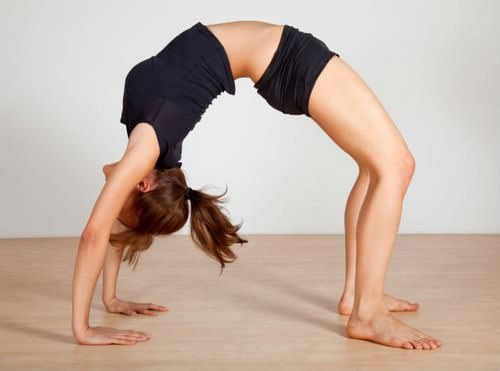
Since the Pitta-Vata type is dominated by two forms of energy, Vata and Pitta, it is typical for it to maintain nutrition taking into account the characteristics of these two components. Pitta – Vata dosha is an energy system in which the superior element is Pitta dosha. This means that to ensure the harmony of the body's systems, it is first necessary to take into account the specifics of Pittadosha, giving secondary importance to Vata dosha, but taking into account this energy properly. Kapha dosha is almost not taken into account in this energy system.
If your energy system is unbalanced, you need to identify the problematic dosha and change your lifestyle in accordance with its parameters.
If you have an upset Vata dosha, you need to switch to a diet designed to restore it. If you have a Pitta dosha disorder, then you need nutrition for Pitta dosha. The balance of Pitta - Vata dosha must be maintained depending on the time of year, observing the rules of Pitta dosha in summer, and Vata dosha in winter. You can determine the disorder yourself by monitoring your behavior and the state of the body; in the description of energy systems there are symptoms of imbalance; if you find several signs that are not characteristic of your body, then it is necessary to balance the bioenergy that has failed.
Doshas and time
Regardless of the initial individual constitution of a person and the innate relationship of Doshas in the body, each of the Doshas can dominate and have a strong impact on the body at different periods of time.
Vata dosha
predominates in the final period of life - in old age and old age, drying out the body, bodily juices, destroying bones and other tissues and bringing senile diseases. Vata is also activated in late spring and early summer, when dry and windy weather prevails, and within a day - at the end of the day and at the end of the night (which is why getting up before dawn ensures vigor for the entire next day).
Pitta dosha
corresponds to the middle period of life, maturity - the time of active activity and accumulation of experience. The season of Pitta is summer and early autumn with humid and warm weather, the time of day is the middle of the day when the sun and digestive fire are most active, and also the middle of the night.
Kapha dosha
dominates at an early age - childhood and adolescence, providing the body with growth and tissue formation; in winter and especially at the beginning of spring, bringing cold and dampness; at the beginning of the day - in the morning - and at the beginning of the night (which helps you fall asleep quickly if you go to bed a few hours after sunset).
Knowing about the peaks of Dosha activity at certain time periods and periods helps to adjust your behavior, daily routine and nutrition to maintain balance with the outside world, since time and external influences exist inseparably from us.
Nutritional recommendations for representatives of the Pitta – Vata dosha type
Products recommended for consumption for Pitta - Vata dosha:
- Milk and dairy products: cream, whey, sour cream, butter, yogurt;
- Sprouted grains;
- Nuts (Exclude cashews, almonds);
- Ripe fruits;
- Oils: coconut, soybean, sunflower;
- Baked vegetables;
- Various spices (except hot ones);
- Warm juices.
Products that need to be excluded from the diet:
- Curdled milk, sour milk;
- Millet, corn, buckwheat, oats, rye;
- Legumes cause bloating and gas;
- Cashews, almonds;
- Sour fruits;
- Leafy vegetables, salads;
- Salt;
- Coffee, tea, cocoa, alcohol;
- Meat, fish, eggs.
Recipes:
Lassi
A popular drink in Indian cuisine is Lassi:
- Beat 0.5 cups of yogurt with 0.5 cups of water;
- 1 tsp rose water (optional);
- 1 tsp Sahara;
- 1/4 tsp. cardamom (Open the fruit capsules, take out the seeds and crush them in a mortar)
Mix all ingredients until foam forms.
The nutritious drink is suitable for balancing all types of doshas at once: Vata dosha, Pitta dosha, Kapha dosha.
The second recipe for making Lassi with the addition of Mango:
- 2 cups yogurt (400 ml);
- 1 glass of milk (200 ml);
- mango 600 gr;
- nutmeg to taste.
Mix all the ingredients except the ground nuts, beat for 4 minutes, add sugar to taste, and sprinkle the finished product with nutmeg. This option balances all types of doshas.
Milk recipe for normalizing Vata dosha and Pitta dosha:
- 1 glass of milk;
- 1/4 cup water;
- 1/4 tsp. cardamom;
- 1/4 tsp. young almonds.
Mix all ingredients and boil to 1 cup of liquid.
This drink improves your tone.
It is best consumed either very early in the morning or after sunset.
Stabilizing the body's energy systems will help you achieve harmony and overall health. For each type of human constitution, it is necessary to select the right strategy to realize the balance of the biological energy field.
Next time we will select diets in detail for other types of constitution Kapha - Vata, Pitta - Kapha and Vata - Pitta - Kapha.
Recipes for Vata Pitta Dosha
Semolina kheer
Ayurvedic diet dishes are prepared based on the dominant dosha. The recipe for vata dosha is semolina kheer. This is a delicious (according to reviews) dessert, which is eaten in small portions, washed down with aromatic tea.
Ingredients:
- milk – 1.5 l;
- semolina – 200 g;
- honey – 200 g;
- chopped walnuts – 200 g;
- ghee butter – 125 g;
- charoul nuts – 1 tbsp. l;
- vanilla – 0.5 tbsp.
Cooking method:
- Melt the ghee in a heavy saucepan.
- Put semolina.
- Fry the mixture until caramelized, stirring constantly.
- Pour milk in a thin stream.
- Bring the mixture to a boil, being careful not to form lumps.
- Add honey, vanilla and nuts.
- Leave the dish on low heat for 3-5 minutes.
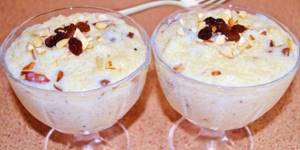
Spicy lassi
The fermented milk drink lassi is called an Ayurvedic probiotic. It normalizes digestion, so it is best to drink it after a hearty lunch. Spicy lassi recipe for diet:
Ingredients:
- water – 200 ml;
- yogurt – 80 ml;
- maple syrup – 2 tsp;
- nutmeg, vanilla - to taste;
- anise – 2 stars.
Cooking method:
- Grind the spices in a blender.
- Add water and room temperature yogurt.
- Beat the mixture for 1 minute.
- Add maple syrup.
- Drink 20 minutes after meals.
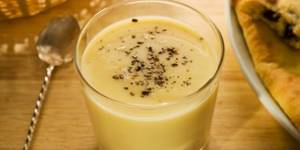
Lavender tea
Recipes for pitta dosha are combined with vata dosha dishes. You can prepare healthy and tasty lavender tea for a sweet dessert:
Ingredients:
- water – 700 ml;
- fennel seeds – ½ tsp;
- dried lavender – ½ tsp.
Cooking method:
- Heat a dry frying pan over low heat.
- Sprinkle fennel over it.
- Fry the seeds until golden brown.
- Pour boiling water over dried lavender leaves.
- Add toasted fennel.
- Infuse the tea for 7-10 minutes.
- Drink warm.
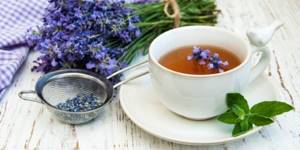
Fish caviar
The easy-to-prepare dish “Fish Caviar” helps cleanse the body of toxins. The finished mixture is used on a diet for sandwiches:
Ingredients:
- dry seaweed – 300 g;
- sweet tomatoes – 3 pcs.;
- water – 1.5-2 tbsp.;
- onions – 2 pcs.;
- linseed oil – 2 tbsp. l.;
- cumin, saffron, ginger, cloves - to taste.
Cooking method:
- Rinse the cabbage and steam with water for 10 minutes.
- Chop the onion and simmer it in oil in a frying pan until golden brown.
- Drain the cabbage and add it to the onion.
- Simmer the dish for 15 minutes.
- Grind the tomatoes with a blender and place in a frying pan.
- Add spices.
- Cook the caviar for another 5 minutes.
- Eat the dish warm, with cereal tortillas.

